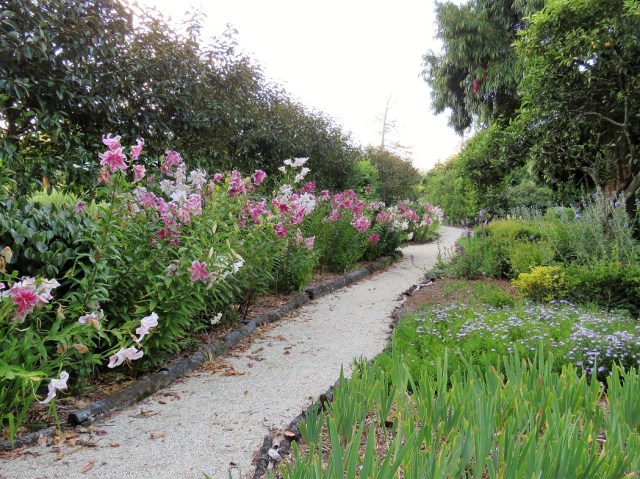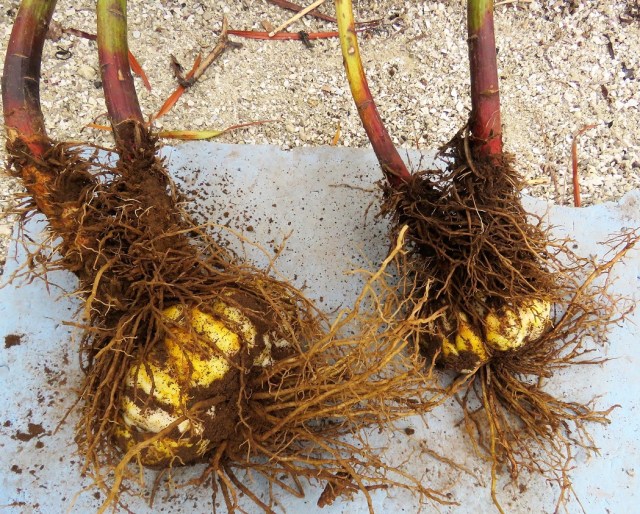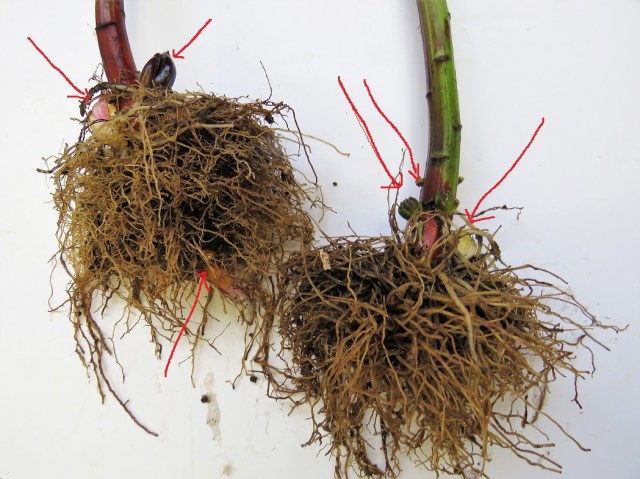
The lily border is a great delight from mid-January on when the enormous blooms put on an entirely OTT display and the scent hangs heavy in the air. I planted it four years ago and looked at it this summer, thinking it needed a bit of attention. There were two or three areas which looked a bit sparse and others with a multitude of smaller bulbs starting to compete in the crowd. I shall lift and divide, I thought. I knew it would be a big job and thought maybe a solid week or ten days would do it.

More fool me. The lily border is about 30 metres long and up to 2 metres wide. A few days in and I worked out I could achieve about 1.5 lineal metres a day. I had a lot of time to do the maths, you understand, and the time stretched out on account of my two trips to Tauranga and a week off with cataract surgery. It became a very boring exercise and it was through gritted teeth that I persevered until I reached the end this week.
What was moderately interesting was analysing the bulbs I lifted. I planted them all as single bulbs at about 20 centimetre spacings coming up to four years ago. That meant a lot of bulbs. Say 50 square metres all up at 25 bulbs per square metre – up to 1250 bulbs. Even if it is only 40 square metres of actual area in bulbs, that is a 1000. I didn’t buy them. Mark did some controlled crosses, picking good parents, raised the seed and put them in his vegetable patch for future use.

Some bulbs had not increased much and were just setting babies on their stems. Some had clearly grown from seed in the first year or two before I started deadheading the border to reduce seeding. Others were large bulbs with two flowering stems last summer and clearly ready to be split apart.


Others had become clusters of bulbs sticking together like a soccer ball, yielding 12 to 15 bulbs from medium small through to large. They were remarkably impressive for just four years. Mark tells me this is the end result of those bulbs that set lots of babies down their stem, usually just below the level of the soil down to where the flower stem emerges from the bulb.
I split all the multiplying bulbs apart, replanting just the flowering sized ones into the freshly dug bed, each covered with a generous scoop of compost before returning the soil and then the aged mulch that I had raked to one side before digging. I aimed to get the bulbs fairly deep – up to 20cm down because if they are planted deeply, they are better at holding themselves up without staking. There is no way I am going to be staking 1000 lily stems. We retain the spent seasonal foliage on site to replenish the soil so I stripped any remaining leaves and cut most of the stems into short lengths about 5cm long so that they will rot down quickly. We finished it off with a tidy top layer of wood chip.
The smallest bulbs were discarded. The smallish ones that will take another year or two to flower, I gave away until I could find no more takers. Zach planted the rest of the littlies back in Mark’s vegetable area for me. It is my emergency supply, I told him and he laughed. Having just planted five rows – fairly short rows, I admit – he felt I should have plenty for any contingency.

We were served Lilium brownii in China when we were there in 2016 but I had not realised until Mark asked me to do a net search that all true lilies are edible and L. auratum is a traditional food in both Japan and China. With so many auratum bulbs here, we tried one. I broke the bulb apart into its component scales, washed them thoroughly, tossed them in olive oil and roasted them. They are perfectly edible, texturally similar to chestnuts and with a flavour best described as inoffensive. They might be more exciting in a stir fry, preferably with added garlic but they are not sufficiently tasty for me to want to add them to our diet on a regular basis.
In fact, all parts of the lily are edible but I will not be harvesting the fresh shoots as an early summer green and eating the massive flowers seems a bit daunting. But should we get hit by famine, it is comforting to know that we have a generous additional food source here we can harvest at will.

